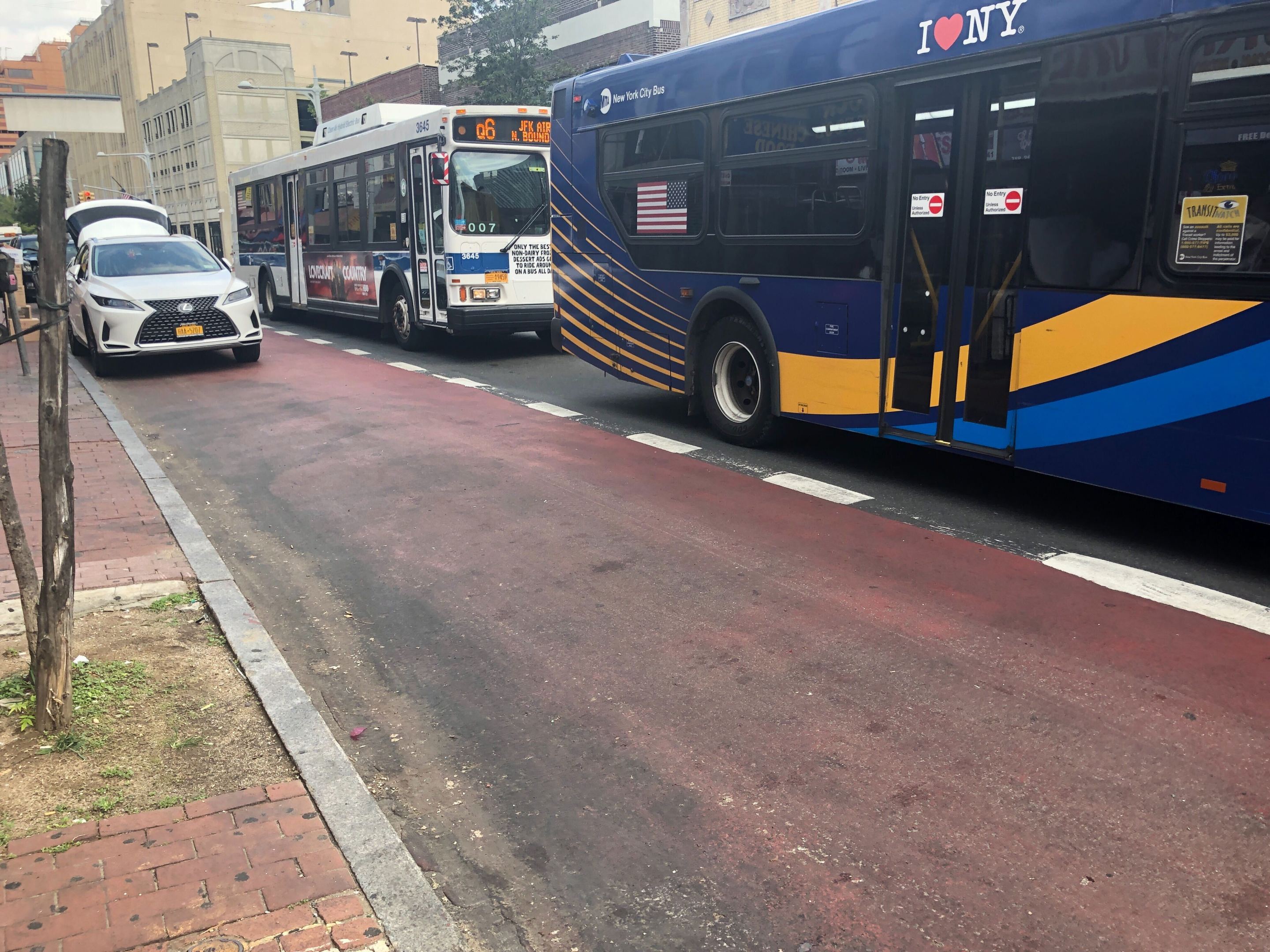The city has started installing a pair of long-delayed parallel busways in Downtown Jamaica, despite local pols’ objections that the agency is simultaneously doing too much and too little to help the neighborhood.
The Department of Transportation announced last week it has begun installing the two car-free stretches along Jamaica and Archer avenues as part of an "urgently" needed initiative announced by Mayor de Blasio last summer that included five car-free busways.
The Jamaica improvements, which seek to speed commutes for long-suffering bus riders and essential workers, are the last of the five to start, after the mayor delayed its installation following backlash from local elected officials who said they did want a busway in the bustling business district, just not the busway being proposed by the mayor.
Rather, Council Member Daneek Miller asked DOT to put the busway on Archer Avenue, as Streetsblog reported, a request that delayed the busway project ... then led to its expansion into car-free stretches on Archer and Jamaica avenues — a move the city says will help 250,000 bus riders a day. Work is expected to wrap later this fall, DOT said.
“Keeping New Yorkers moving is essential to getting our friends and neighbors back to work as New York City’s recovery continues,” said DOT Commissioner Hank Gutman last week.
This week, NYC DOT will begin work on the Jamaica Ave and Archer Ave busway pilots in #Queens. These transit improvements will:
— NYC DOT (@NYC_DOT) September 13, 2021
🚌 Increase bus speeds & reliability
🚗 Calm traffic
🛻 Improve truck travel loading & unloading
🚘 Maintain local access pic.twitter.com/gAAJ7zmpaJ
Currently on Jamaica Avenue, which serves 147,000 daily bus riders on 15 routes, there are two lanes in each direction — a westbound dedicated bus lane between Sutphin Boulevard and Parsons Avenue, and an eastbound dedicated bus lane runs between Parsons Avenue and 168th Street. Both operate only during the morning and evening rush hours.
But the DOT has said those bus lanes are regularly blocked by vehicles with placards and cars and trucks making drop-offs and deliveries. The DOT plans to make the corridor restricted only to buses and commercial trucks. Passenger vehicles will be able to access most blocks, but would have to exit via the first available right turn.
And a Jamaica Avenue busway would not only help commuters and essential workers, but local businesses too, according to a DOT survey conducted over the summer, which showed that the majority of people on the commercial corridor, to either shop or work, arrived by bus. Only six percent said they arrived by car, according to DOT.
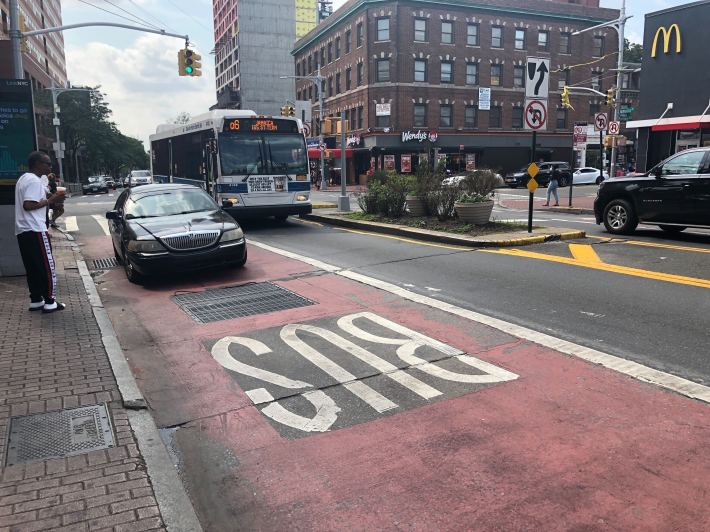
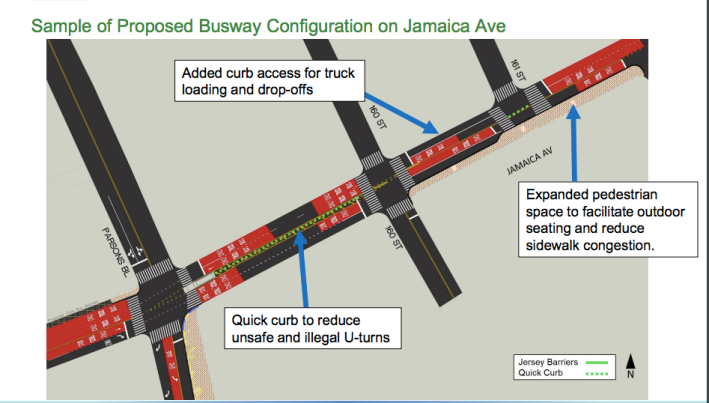
And currently on Archer Avenue — which is used by thousands more people who commute locally or via the adjacent Long Island Railroad and subway stations, including the Jamaica stop on the LIRR and the E, J, and Z lines — there are also two lanes in each direction, though one lane is already painted as a dedicated bus lane in each direction 24/7. DOT plans to install double bus lanes eastbound between 150th and 160th streets. There will be no curbside access, all eastbound traffic must turn left on 153rd Street, and DOT plans to install jersey barriers to prevent illegal vans from entering the busway, according to the agency.
Both busways will be in effect 24/7, according to DOT.
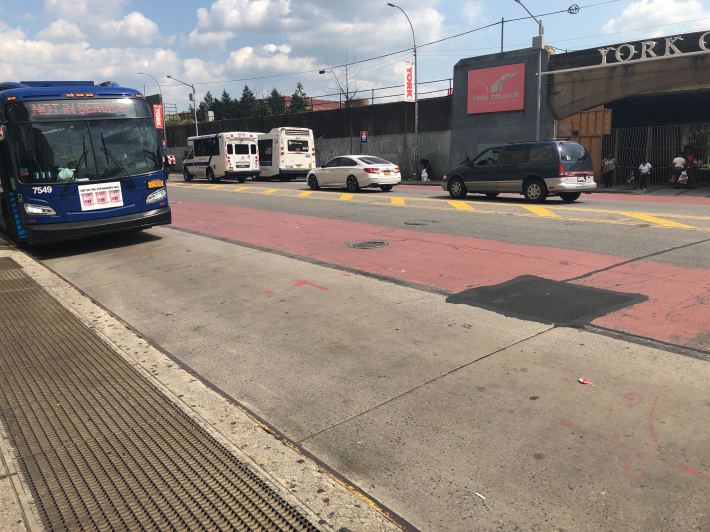
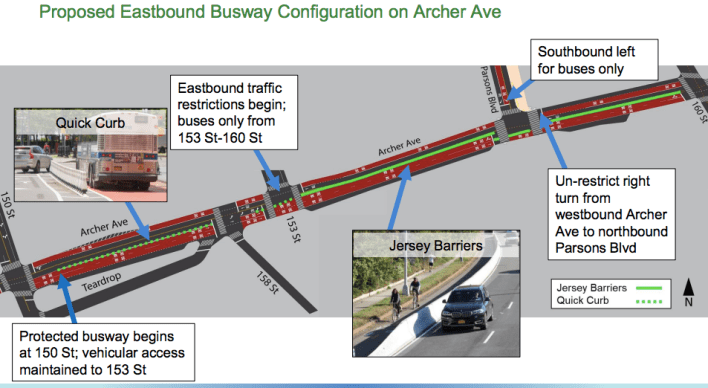
But even after the city took his own suggestion to put a busway on Archer Avenue, Miller is still not happy — he and the other local pols railed against both transit-improving infrastructure projects in a Sept. 10 missive, citing issues with the "accelerated implementation timeline," and frustrations with a new dedicated bus lane on Merrick Boulevard between Hillside Avenue and Springfield Boulevard, which carries about 77,000 daily passengers and runs perpendicular to Archer and Jamaica avenues. They say that nearby auto body shops leave abandoned vehicles along Merrick Boulevard, blocking the buses and rendering the bus lane obsolete.
State Senator Leroy Comrie suggested, counter-intuitively, that the DOT's latest efforts to improve bus service in Queens is "unconscionable" because the agency "continues to ignore the needs of the community, just as they did with the implementation of the bus lane on Merrick Boulevard."
"DOT has done little to resolve persistent quality-of-life issues on that corridor, and have ignored our request for rush-hour only enforcement even as small businesses and local residents suffer," he said. "I cannot support a major project along one of our busiest commercial hubs when serious concerns are yet to be addressed just a few blocks away on Merrick."
To address the concerns, DOT reps say they installed bus lane camera infrastructure along Merrick Boulevard earlier this month and are working with both local precincts — the 103rd and 113th — and the Department of Sanitation to get rid of the abandoned vehicles. DOT is also revising the hours on the previously 24/7 Merrick Boulevard bus lane to be 6 a.m. to 7 p.m. on weekdays only, following the pols' complaints.
Still, some bus speeds along Merrick Boulevard have increased more than 20 percent, according to DOT — even before the red paint and cameras went into effect earlier this month.
During the morning rush hour, northbound buses on Merrick Boulevard increased 20.8 percent, from 10.1 to 12.2 miles per hour. And in the evenings heading south, bus speeds rose 10.9 percent, from 7.3 to 8.1 mph. The smallest jump was just 5.2 percent, on the morning southbound buses, which increased slightly from 8.6 to 9 mph, according to DOT.
And the same improvements are needed on Jamaica and Archer avenues, advocates say, where buses crawl along at about just 4 miles per hour on both thoroughfares. A Queens organizer for Riders Alliance acknowledged the shortcomings of the Merrick Boulevard bus lane, but said the pair of Downtown Jamaica busways will still help more than 300,000 daily riders, many of whom have bemoaned their long and painful commutes.
“It’s unfortunate that DOT did not deliver on Merrick. It’s no reason to postpone a project that will impact 328,000 daily bus riders. We’ve spent nearly 50 hours talking to bus riders in Jamaica and almost every single person expressed problems with their bus commutes," said Jolyse Race. "Riders are showing up late to work because their bus so unreliable, they’re losing out on time spent with friends and family. Fifty percent of essential workers who carried the city through the pandemic rely on the bus and are still stuck waiting. Bottom line is that bus riders deserve better.”
